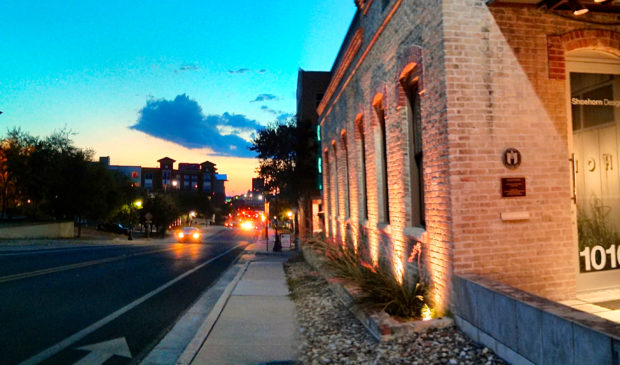City working to align development standards on East 11th Street corridor
Thursday, April 18, 2019 by
Jessi Devenyns Development in Austin is anything but straightforward. That’s especially true on East 11th Street, where efforts to transform blighted neighborhoods into a vibrant downtown gateway are governed both by the Urban Renewal Plan and the Neighborhood Conservation Combining District.
According to Jana McCann, a principal at McCann Adams Studio who spoke to the Urban Renewal Board at its April 15 meeting, the current iteration of the URP “has caused a lot of distress and confusion.”
In an effort to reconcile development standards between the two zoning regulation documents, city staff is reaching out to stakeholders and the Urban Renewal Board to go through the old language of the East 11th Street Urban Renewal Plan and bring it up to date and integrate the 11 plan modifications that have occurred since the document’s inception.
The idea, explained Sandra Harkins of the Neighborhood Housing and Community Development Department, is to preserve the original intent of the Urban Renewal Plan, which was approved in 1999, but bring the language up to date. She explained that once the document is cleaned up, staffers want to rewrite the 11th Street section of the NCCD document that governs both East 11th and 12th streets.
“We’re not doing a lot of changing any of it in terms of hardcore development standards,” noted McCann. She explained that beyond eliminating redundancies between the two documents, there are some land use cases in the URP that are no longer applicable and some new uses, like urban farms, that didn’t previously exist and need to be incorporated. Additionally, references to partnerships with the Austin Revitalization Authority need to be expunged from the document since the city no longer has an agreement with that entity.
Harkins did suggest replacing the floor area ratio standard, which she explained was a “very gross way” to measure development. She suggests using more precise tools like setback and height restrictions for the different subdistricts of the neighborhoods. Additionally, she mentioned that certain parcels on the 11th Street corridor contained very specific project controls that are no longer applicable in today’s development environment or limit development options because of their inflexibility. In some cases, there is a lack of alignment with Council’s six strategic outcomes that are guiding development until 2023.
This exercise of hunting line by line to clean up the zoning standards in the document, while tedious, will be essential for developers when they are trying to request permits and design their buildings to be in compliance. As it stands, depending on which document they look at – the URP or the NCCD – there can be two different sets of regulations to abide by.
Harkins gave one notable example of a conflict between the two documents. “The NCCD allows (building height) to go to 60 feet. The Urban Renewal Plan limits it to 35 feet. That’s a huge conflict,” she said.
Although the more restrictive document applies if there is any dispute, having both records reflect the same plan for the city would be beneficial to all parties.
The Urban Renewal Board members will come back next month with their comments on how they think the Urban Renewal Plan should be altered to bring it into the 21st century. To broaden the discussion, city staff will return with stakeholder input. Once a draft has been fleshed out, it will proceed to the Planning Commission and then to City Council where it will be voted on for approval.
Photo by Nathaniel made available through a Creative Commons license.
The Austin Monitor’s work is made possible by donations from the community. Though our reporting covers donors from time to time, we are careful to keep business and editorial efforts separate while maintaining transparency. A complete list of donors is available here, and our code of ethics is explained here.
You're a community leader
And we’re honored you look to us for serious, in-depth news. You know a strong community needs local and dedicated watchdog reporting. We’re here for you and that won’t change. Now will you take the powerful next step and support our nonprofit news organization?








